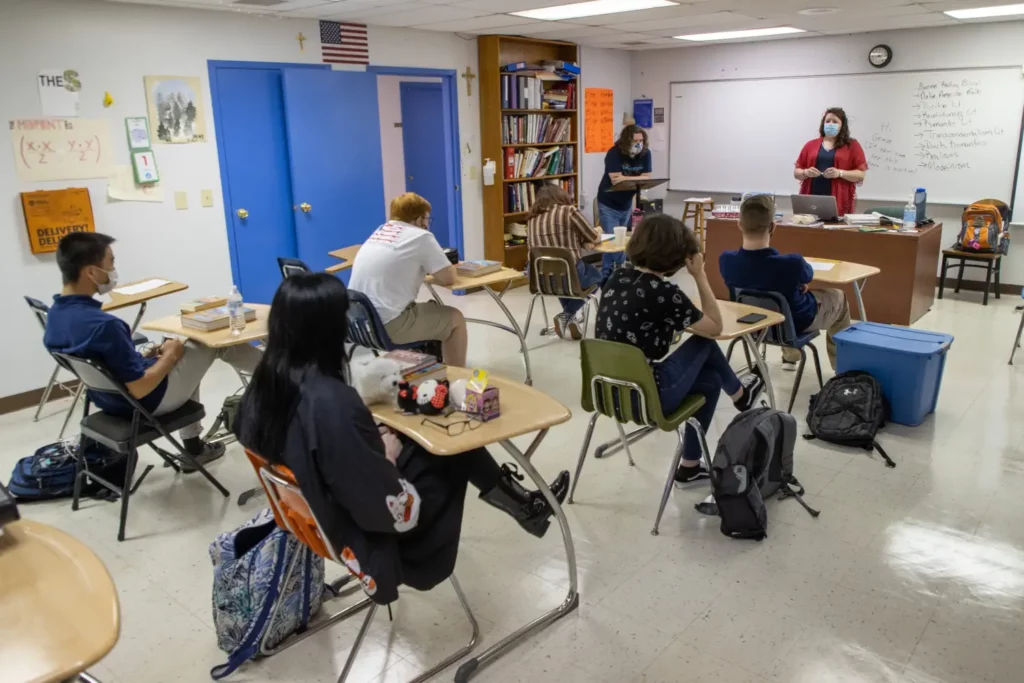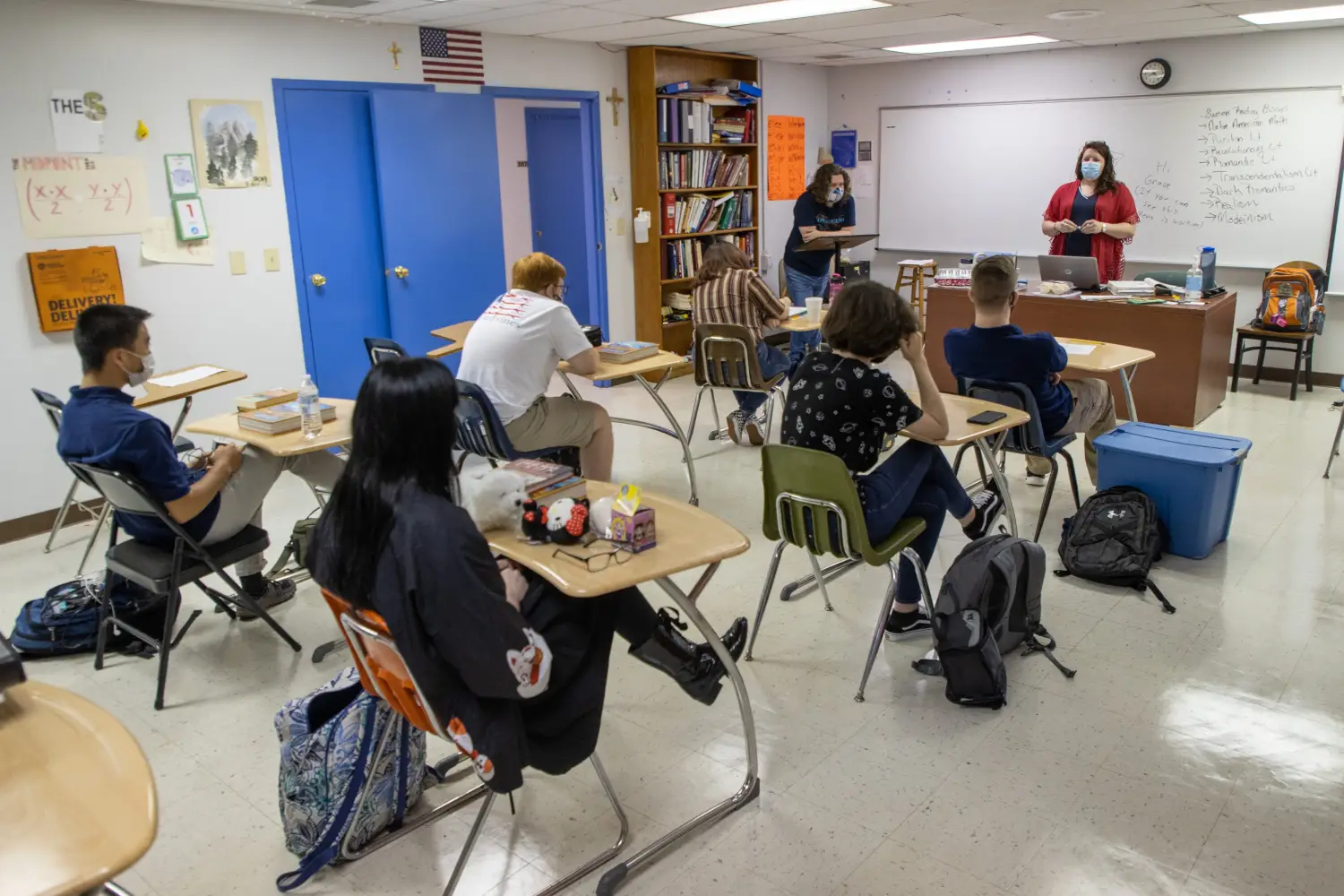
Education in America stands as a cornerstone of societal development, reflecting the nation’s values, aspirations, and challenges. The American education system has undergone profound transformations over the years, shaped by historical events, societal shifts, and technological advancements. In this comprehensive exploration, we delve into the multifaceted landscape of education in America, examining its historical roots, contemporary dynamics, and the future trajectory it is poised to take.
Historical Foundations
The roots of education in America stretch back to the colonial era when the Puritans established the first formal education system to ensure the perpetuation of their religious beliefs. As the nation evolved, so did its approach to education. The 19th century witnessed the advent of the common school movement, driven by the belief that a democratic society required an educated populace. Pioneers like Horace Mann advocated for free, compulsory education accessible to all, laying the groundwork for the modern education system.
However, historical challenges persistently intertwined with progress. The specter of segregation haunted American schools for much of the 20th century. The landmark Supreme Court case, Brown v. Board of Education in 1954, was a watershed moment, declaring state laws establishing separate public schools for black and white students to be unconstitutional. Despite this landmark decision, achieving true educational equality remained an ongoing struggle, with disparities persisting in funding, resources, and opportunities.
Contemporary Challenges
The landscape of education in America today is marked by a mix of achievements and challenges. While strides have been made in promoting inclusivity and access, persistent issues continue to demand attention. One such challenge is educational inequality. Disparities in funding between affluent and economically disadvantaged districts perpetuate a cycle of unequal opportunities, impacting the quality of education available to students based on their geographic location.
The standardized testing debate remains a contentious issue, with critics arguing that it narrows the curriculum, fosters a culture of “teaching to the test,” and exacerbates existing inequalities. The push for more holistic assessment methods that consider students’ overall abilities, creativity, and critical thinking skills has gained momentum in recent years.
The advent of technology has ushered in a new set of challenges and opportunities. The digital divide, reflecting discrepancies in access to technology and the internet, has become a prominent concern, especially highlighted during the COVID-19 pandemic when remote learning became a necessity. Bridging this gap is crucial to ensuring that all students have equitable access to educational resources and opportunities.
Innovations in Education
Amidst these challenges, the American education system has witnessed a surge in innovative approaches aimed at enhancing the learning experience and preparing students for an ever-changing world. Personalized learning, leveraging technology to tailor education to individual student needs, has gained prominence. This approach recognizes the diverse learning styles and paces of students, fostering a more adaptive and student-centric educational environment.
Project-based learning has emerged as a pedagogical strategy to promote critical thinking and problem-solving skills. By engaging students in hands-on projects, educators aim to instill a deeper understanding of the subject matter and cultivate skills that transcend rote memorization.
Blended learning models, combining traditional classroom instruction with online resources, offer flexibility and cater to the needs of diverse learners. This approach allows students to access educational materials at their own pace while maintaining the crucial social interaction that comes with in-person learning.
Teacher development has also taken center stage in the quest for educational improvement. Recognizing the pivotal role of teachers, initiatives focused on ongoing professional development, mentorship programs, and the creation of a supportive teaching environment have gained prominence.
Policy Implications and Reforms
Education policy plays a pivotal role in shaping the direction of the American education system. Policymakers grapple with finding a balance between federal oversight and local autonomy, seeking to establish standards while allowing flexibility for innovation. The Every Student Succeeds Act (ESSA), enacted in 2015, marked a shift towards greater state and local control, emphasizing the importance of tailoring education policies to meet the unique needs of individual communities.
Calls for education reform often center on equitable funding mechanisms to address resource disparities among schools. Advocates argue that restructuring funding models could help bridge the gap between affluent and economically disadvantaged districts, ensuring that all students have access to high-quality educational opportunities.
Early childhood education has garnered increased attention as a crucial foundation for future academic success. Proponents of reform advocate for expanded access to high-quality preschool programs, emphasizing the importance of addressing educational disparities from the earliest stages of a child’s development.
The Future of Education in America
As America stands at the crossroads of its educational journey, the future holds both challenges and exciting possibilities. The integration of technology is set to play a pivotal role, with artificial intelligence, virtual reality, and other emerging technologies poised to revolutionize the learning experience. However, ensuring equitable access to these technologies remains paramount to prevent the exacerbation of existing inequalities.
The notion of lifelong learning is gaining traction, highlighting the need for continuous skill development and adaptability in a rapidly evolving job market. Education is increasingly viewed as a lifelong journey, with individuals engaging in learning experiences at various stages of their lives to remain competitive and contribute meaningfully to society.
In conclusion, education in America is a dynamic tapestry woven with historical threads, contemporary challenges, and innovative solutions. By addressing issues of inequality, embracing progressive approaches, and adapting policies to the evolving needs of society, the United States can forge a robust and inclusive education system that empowers generations to come. The journey towards an enlightened future begins with nurturing the minds of today, acknowledging that education is not merely a destination but a lifelong odyssey.











